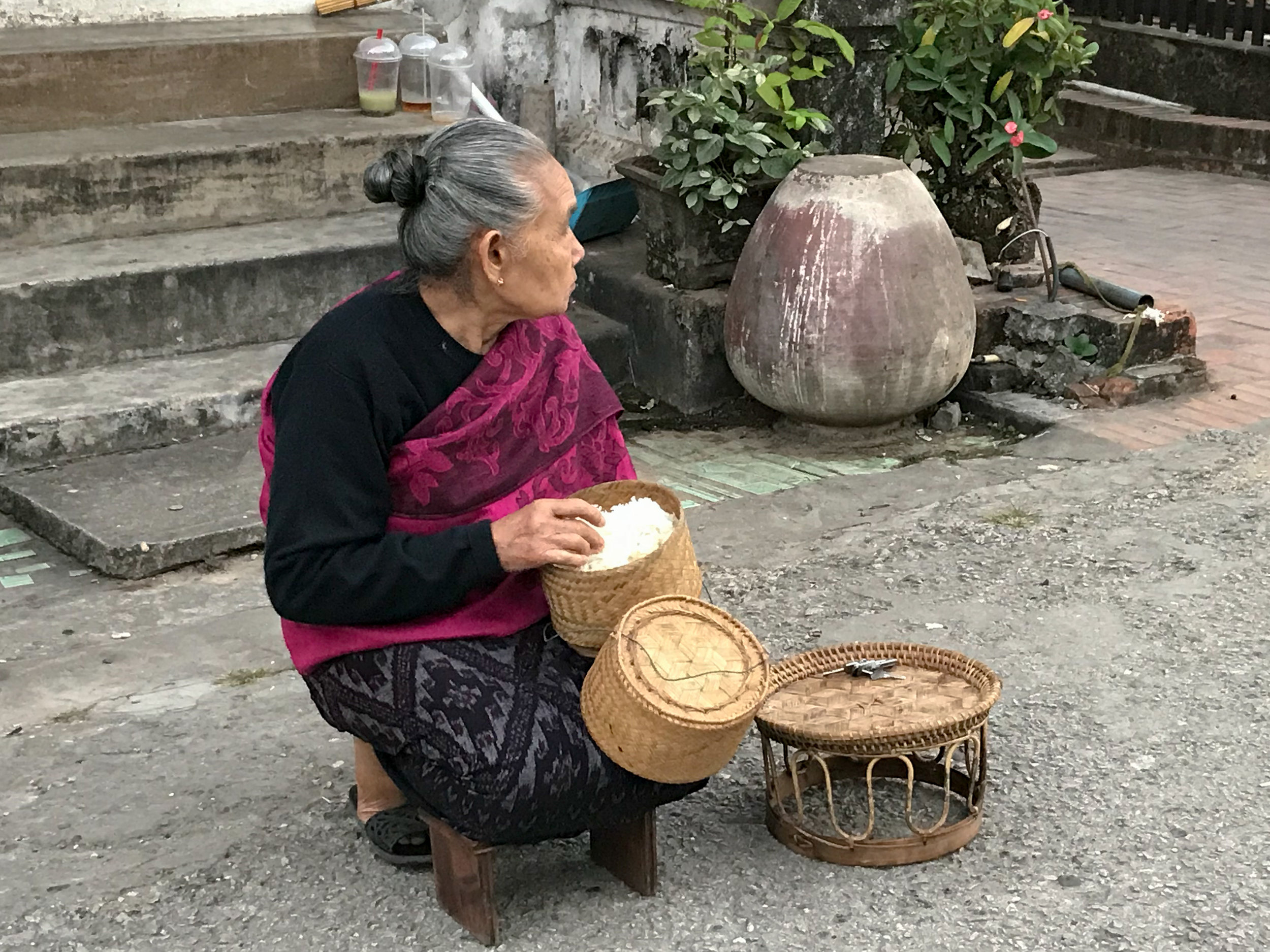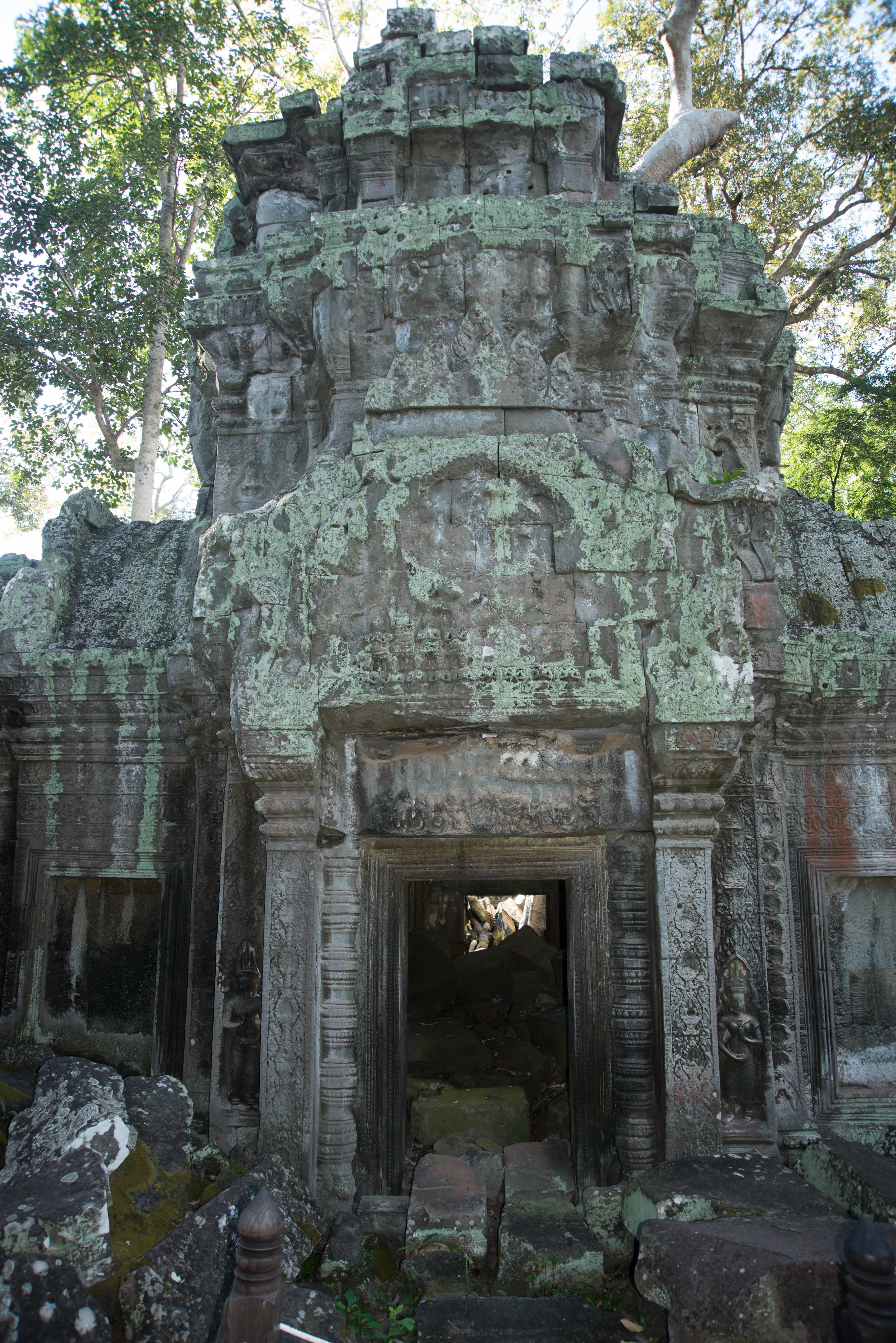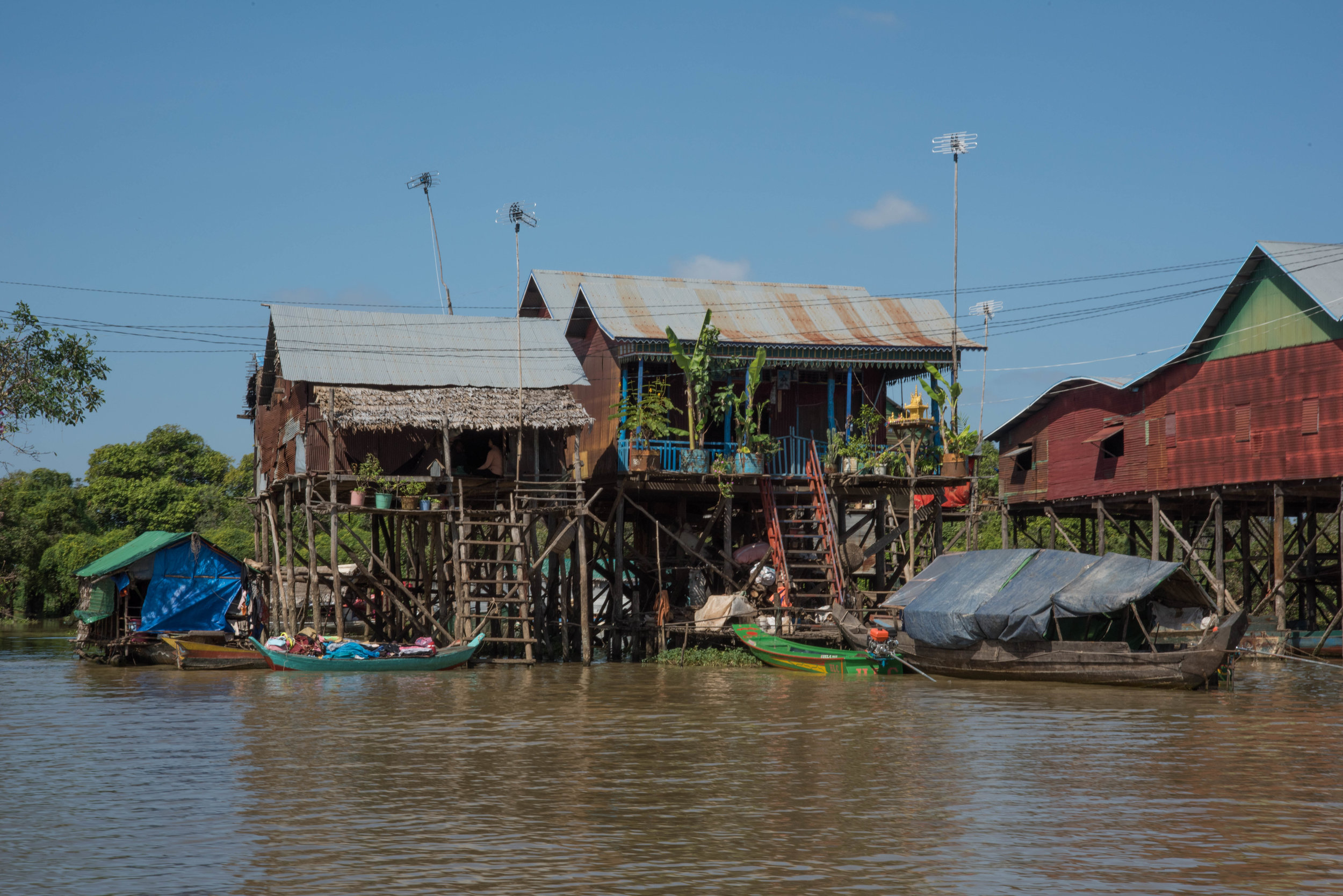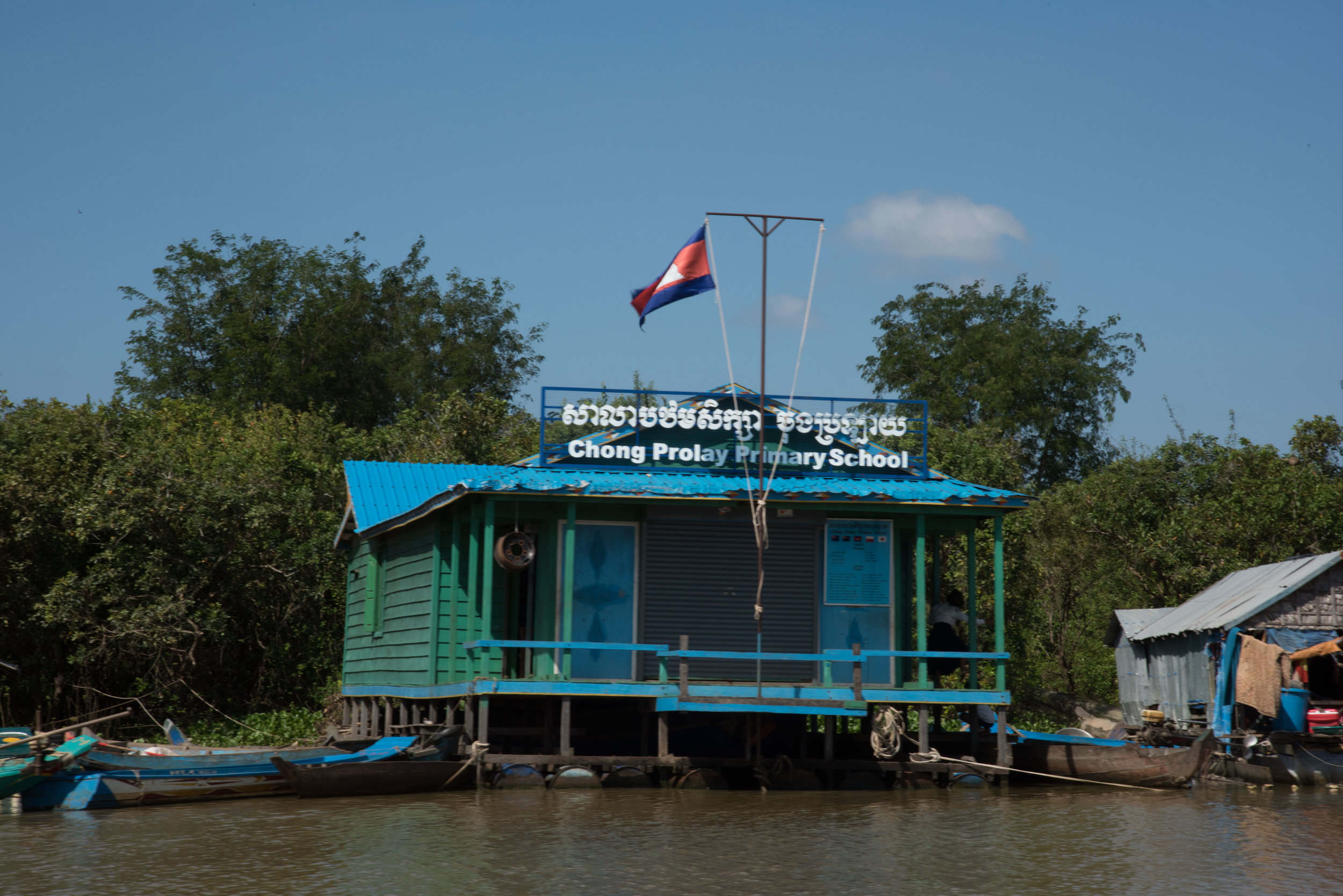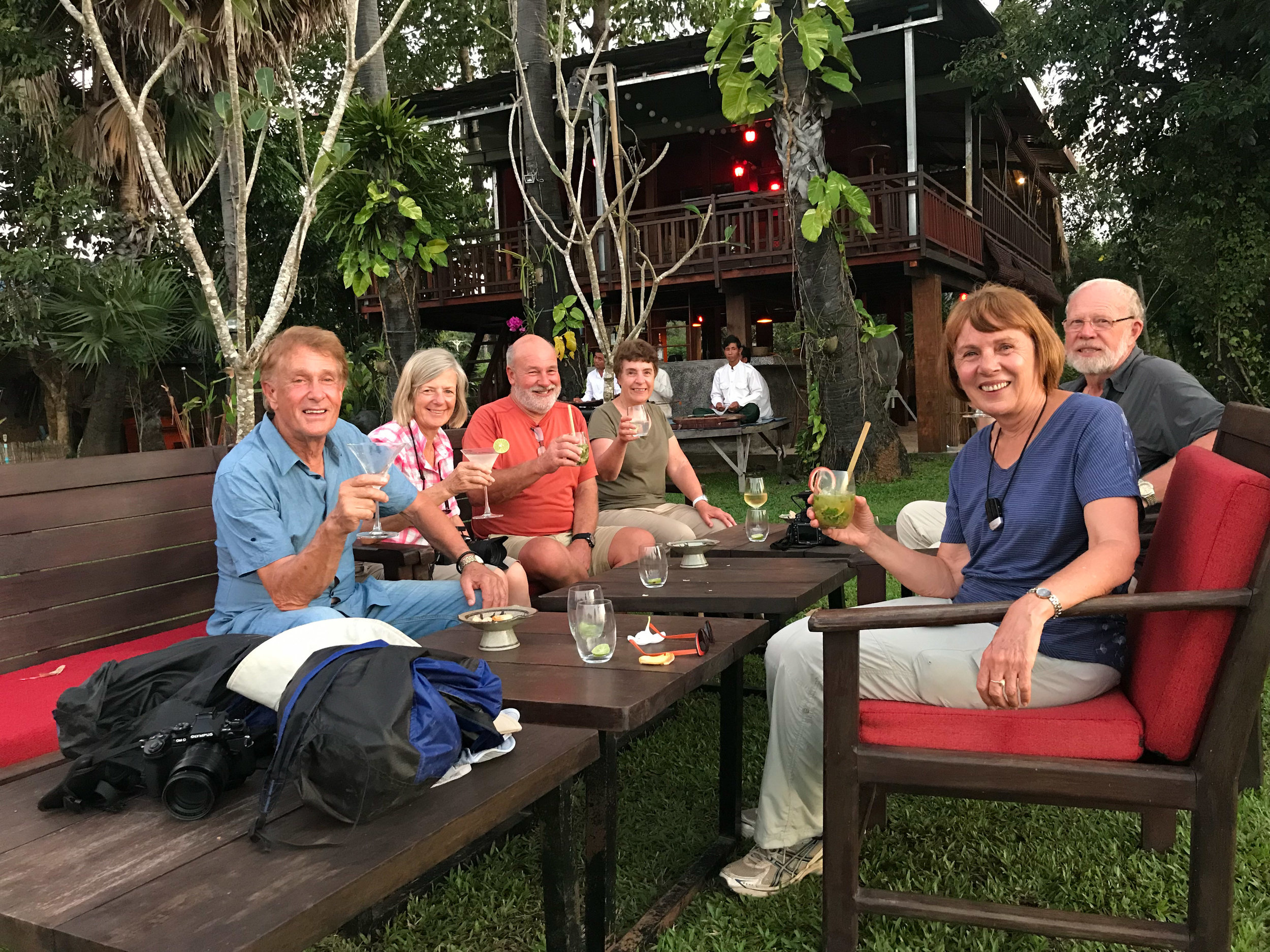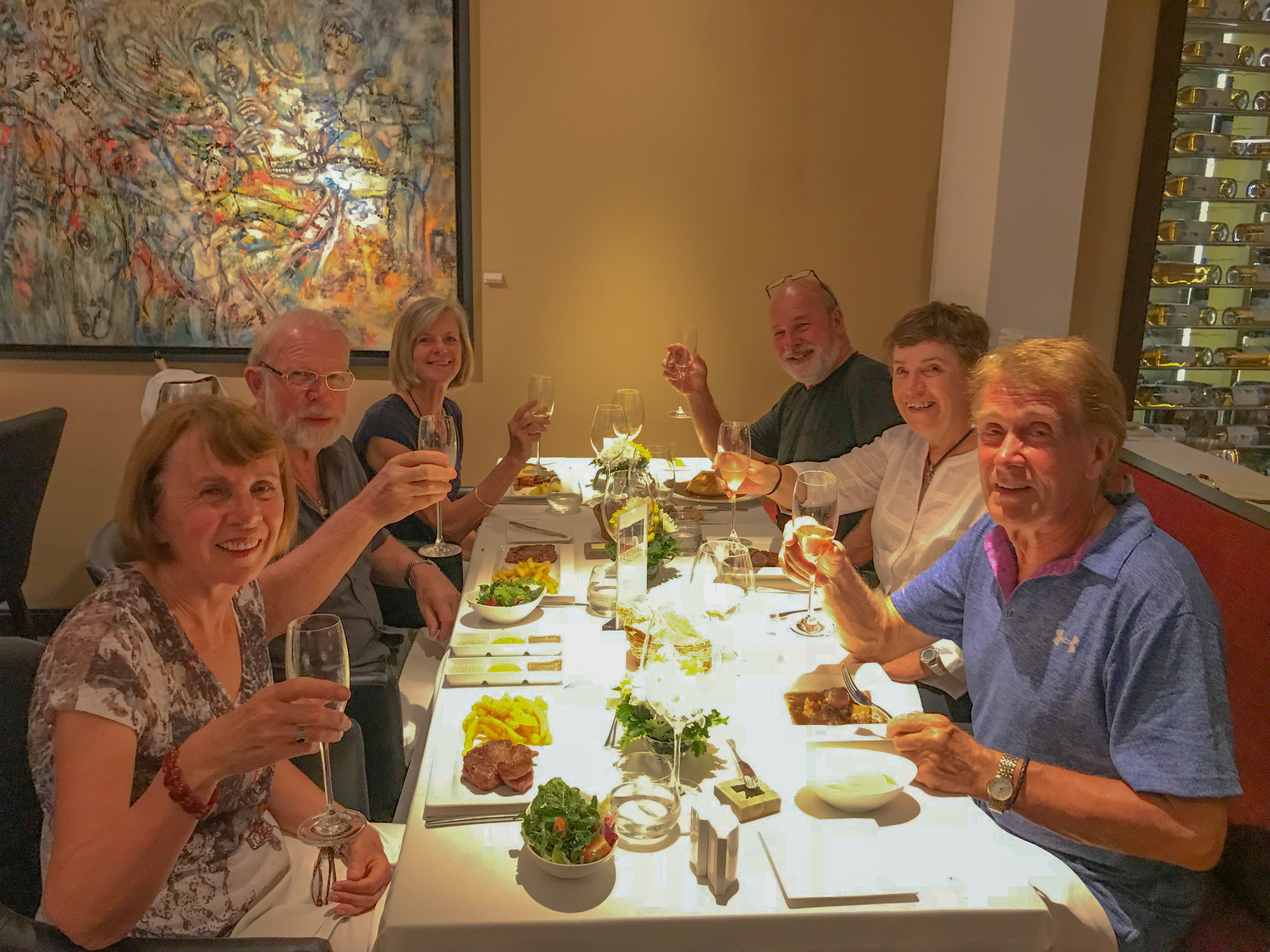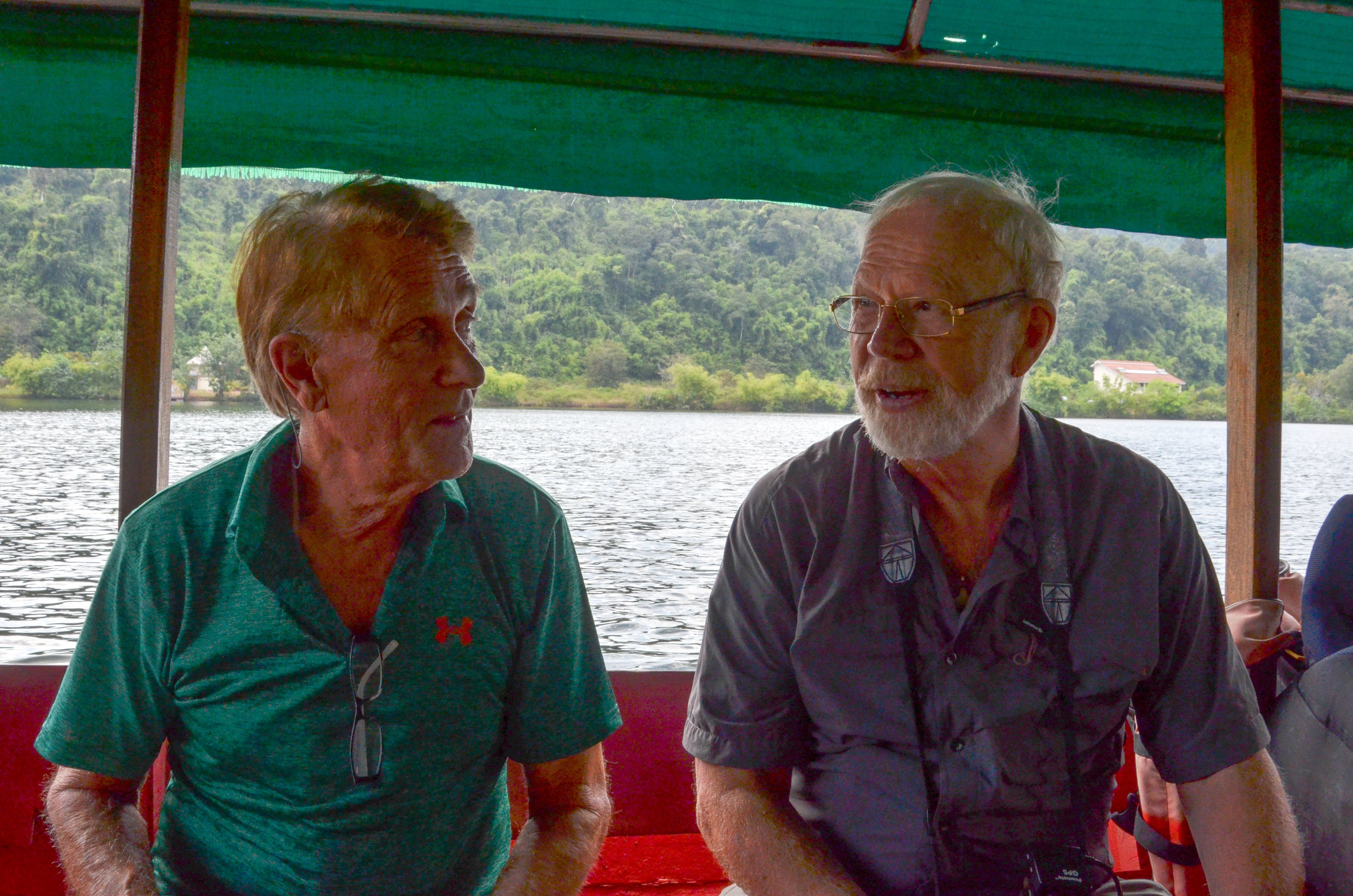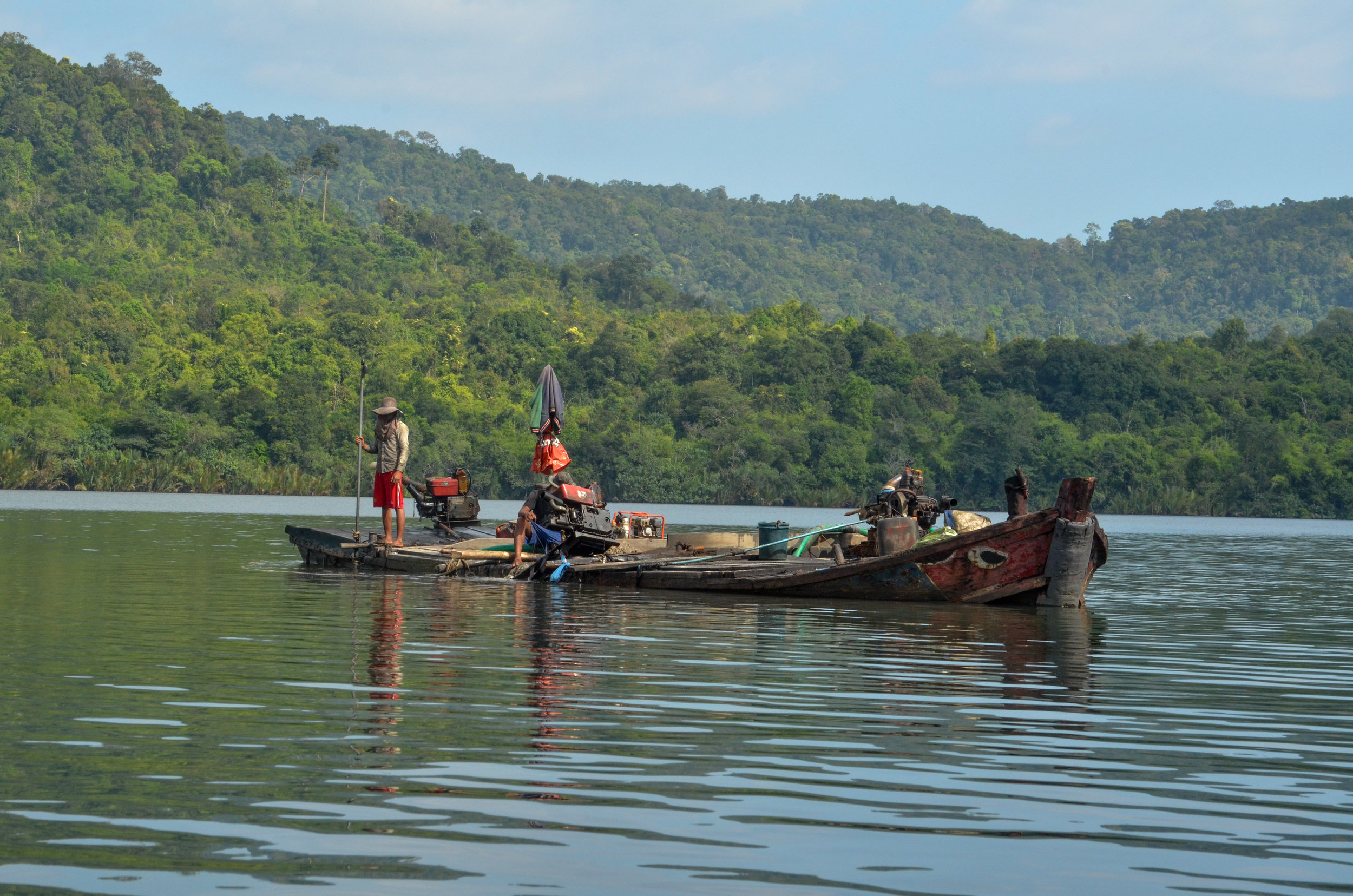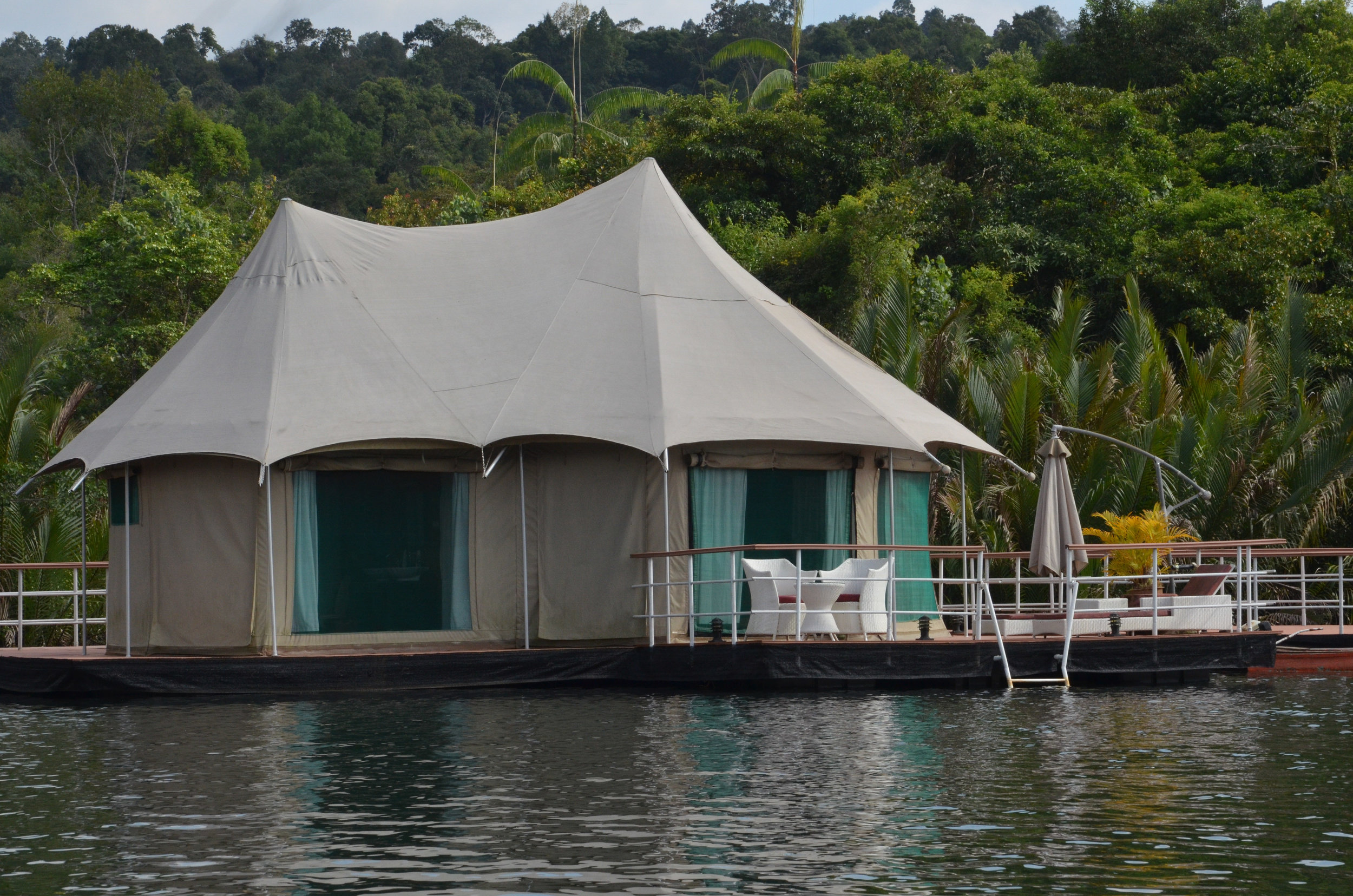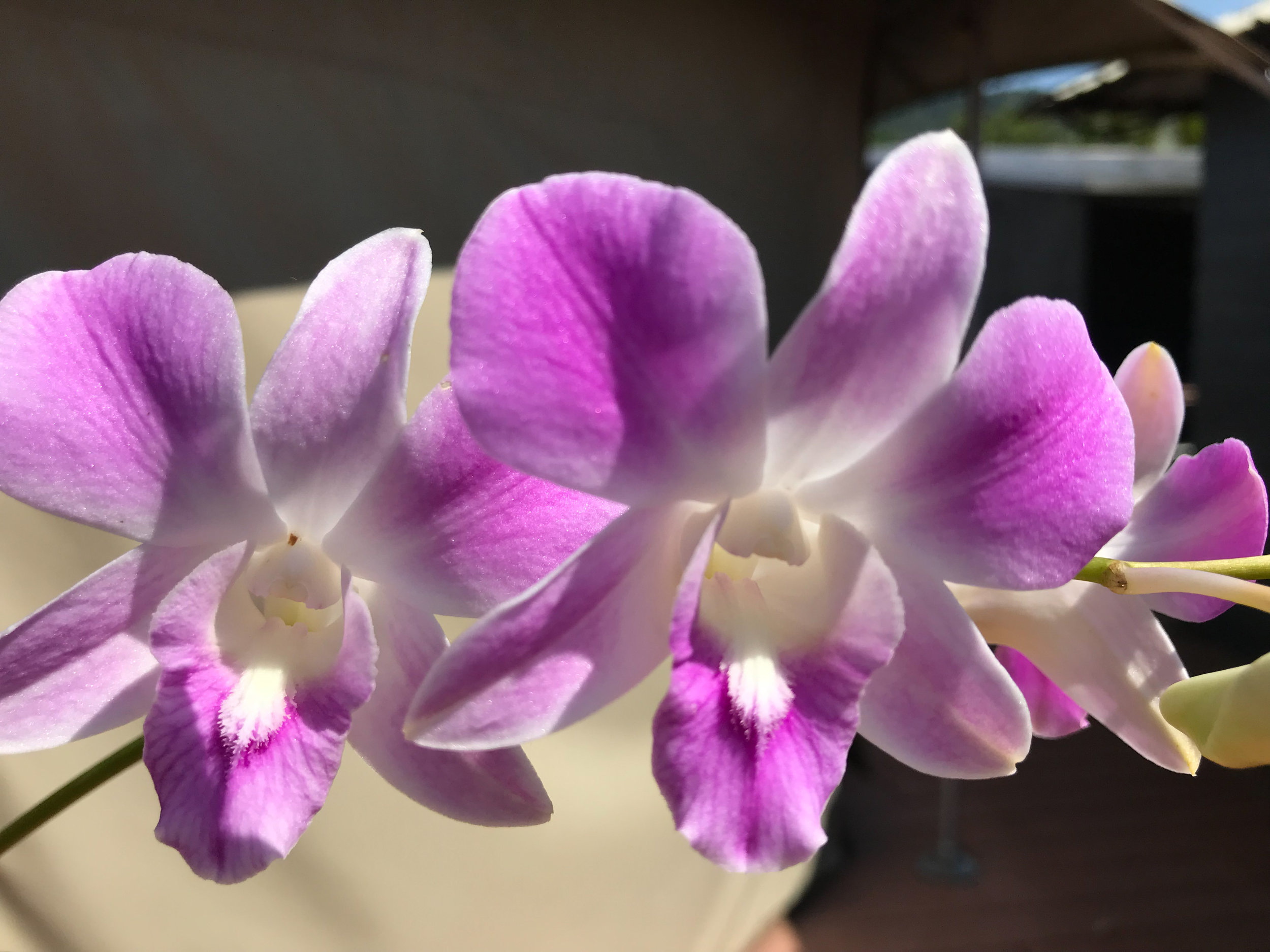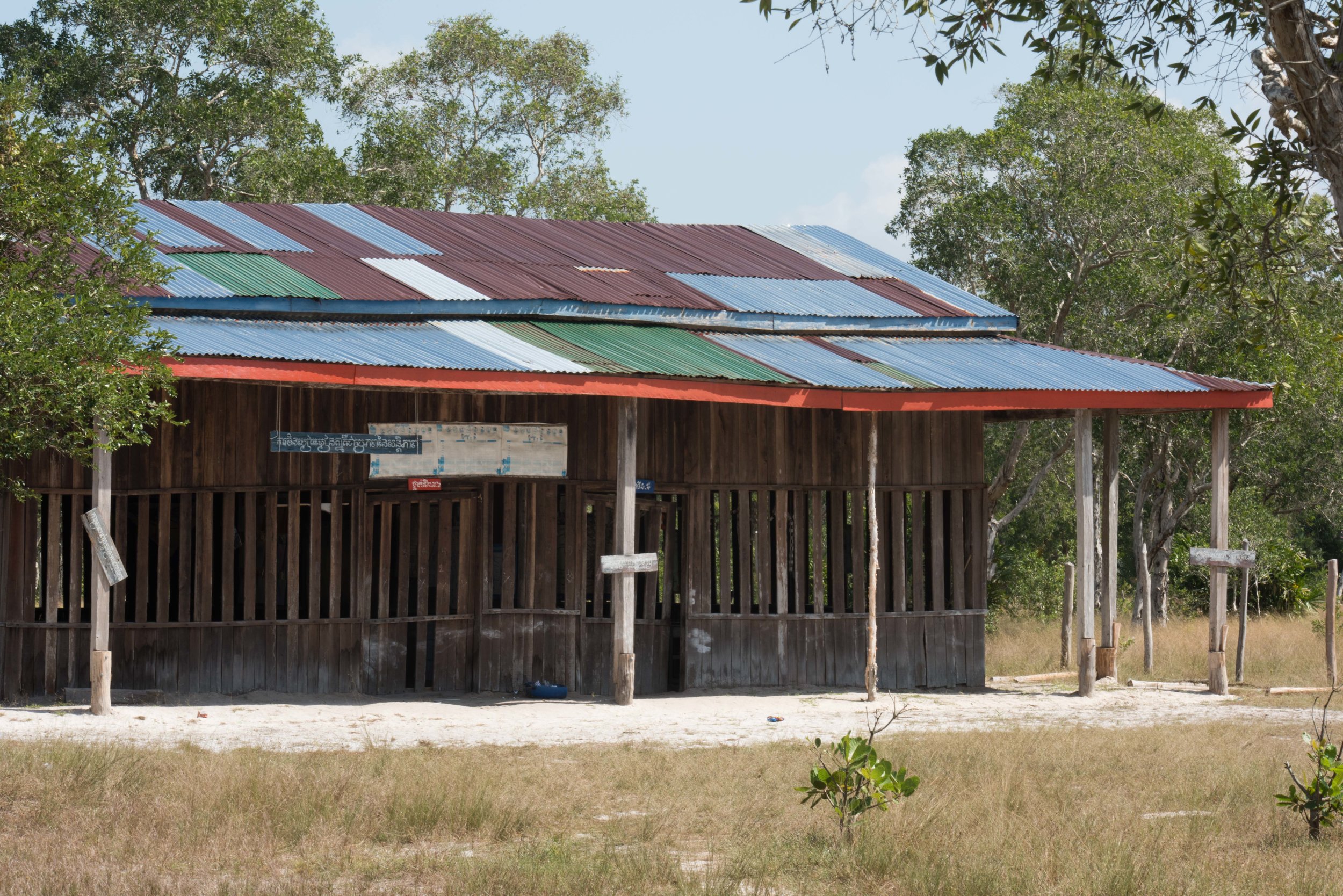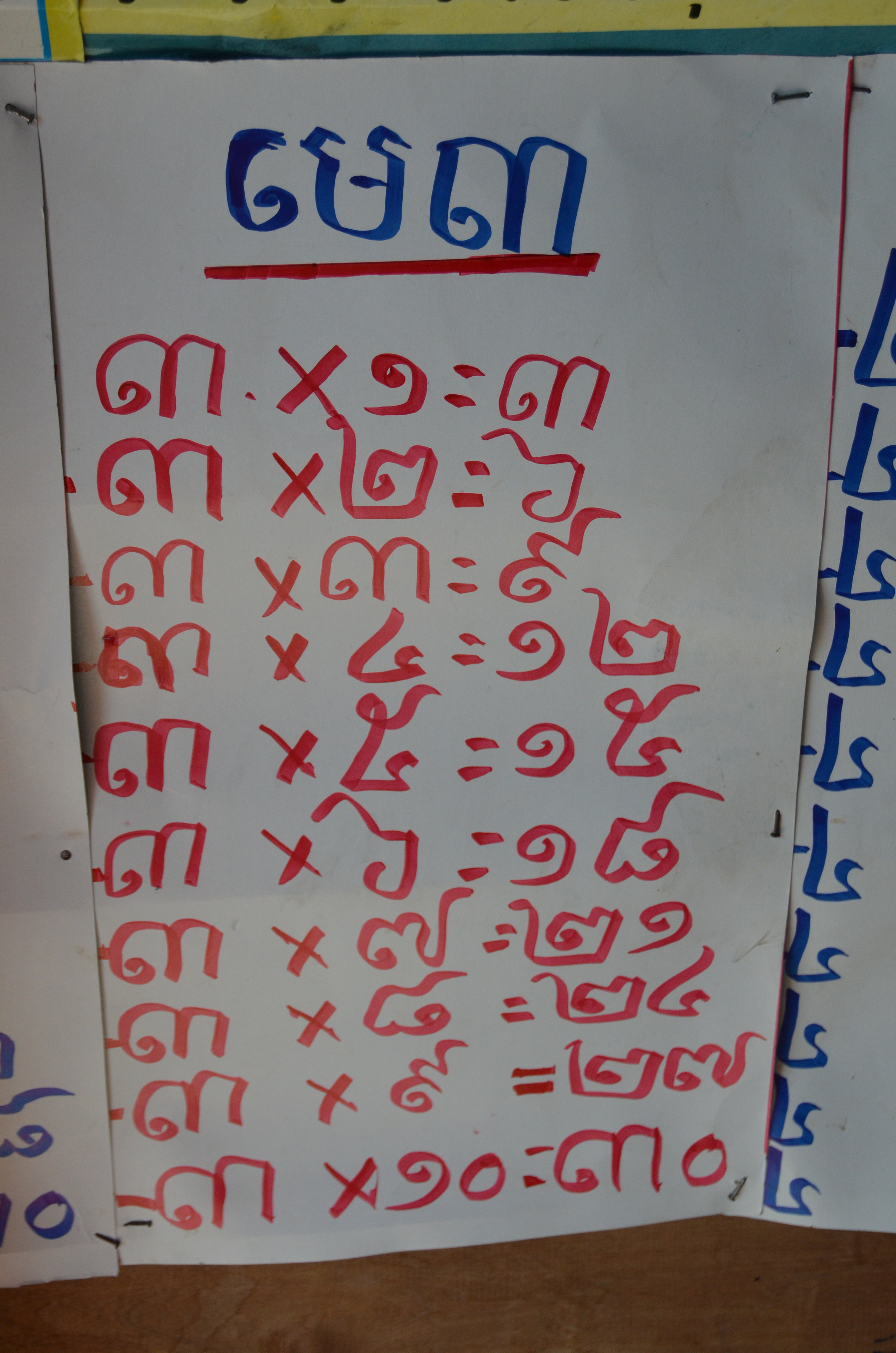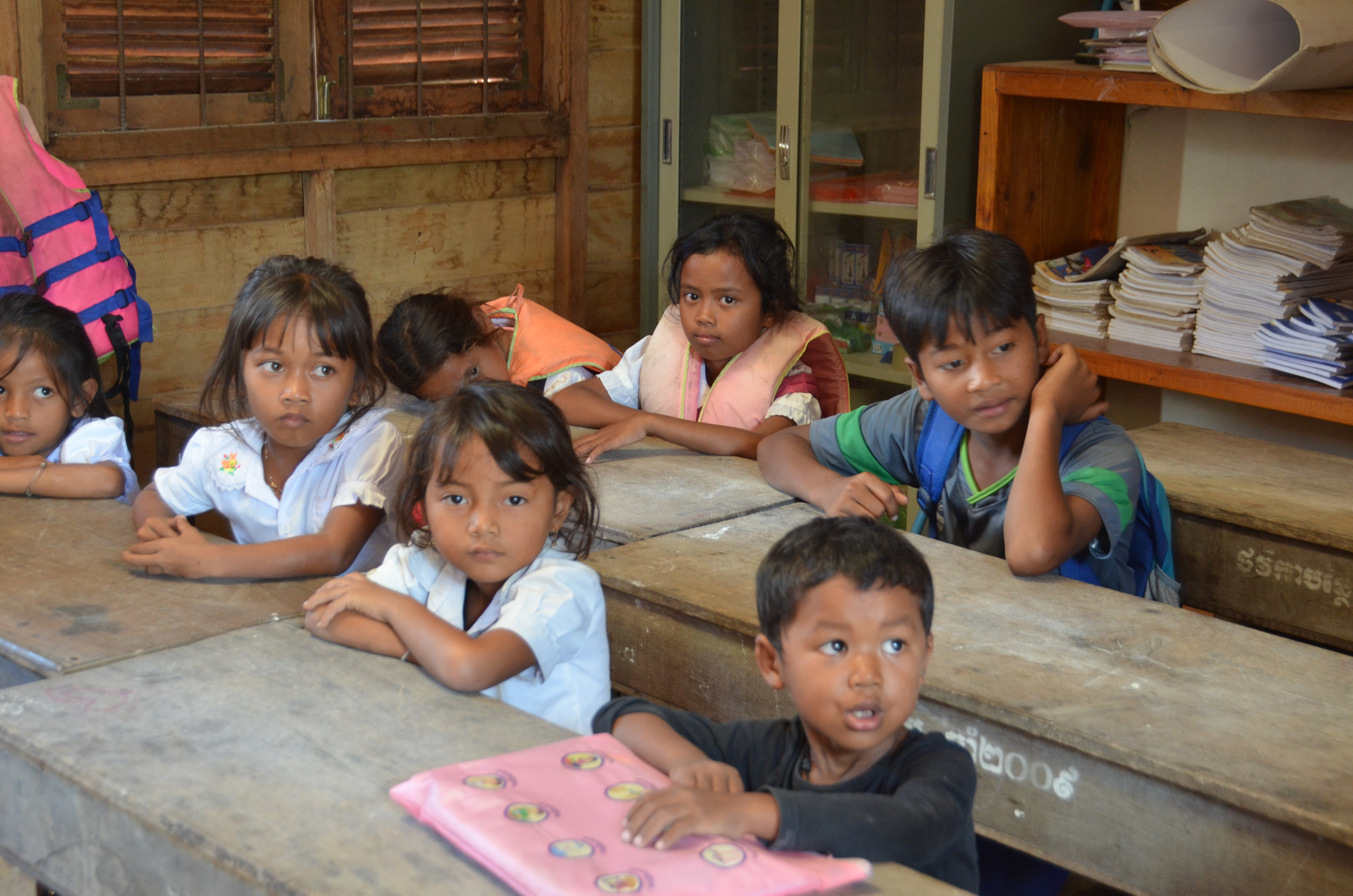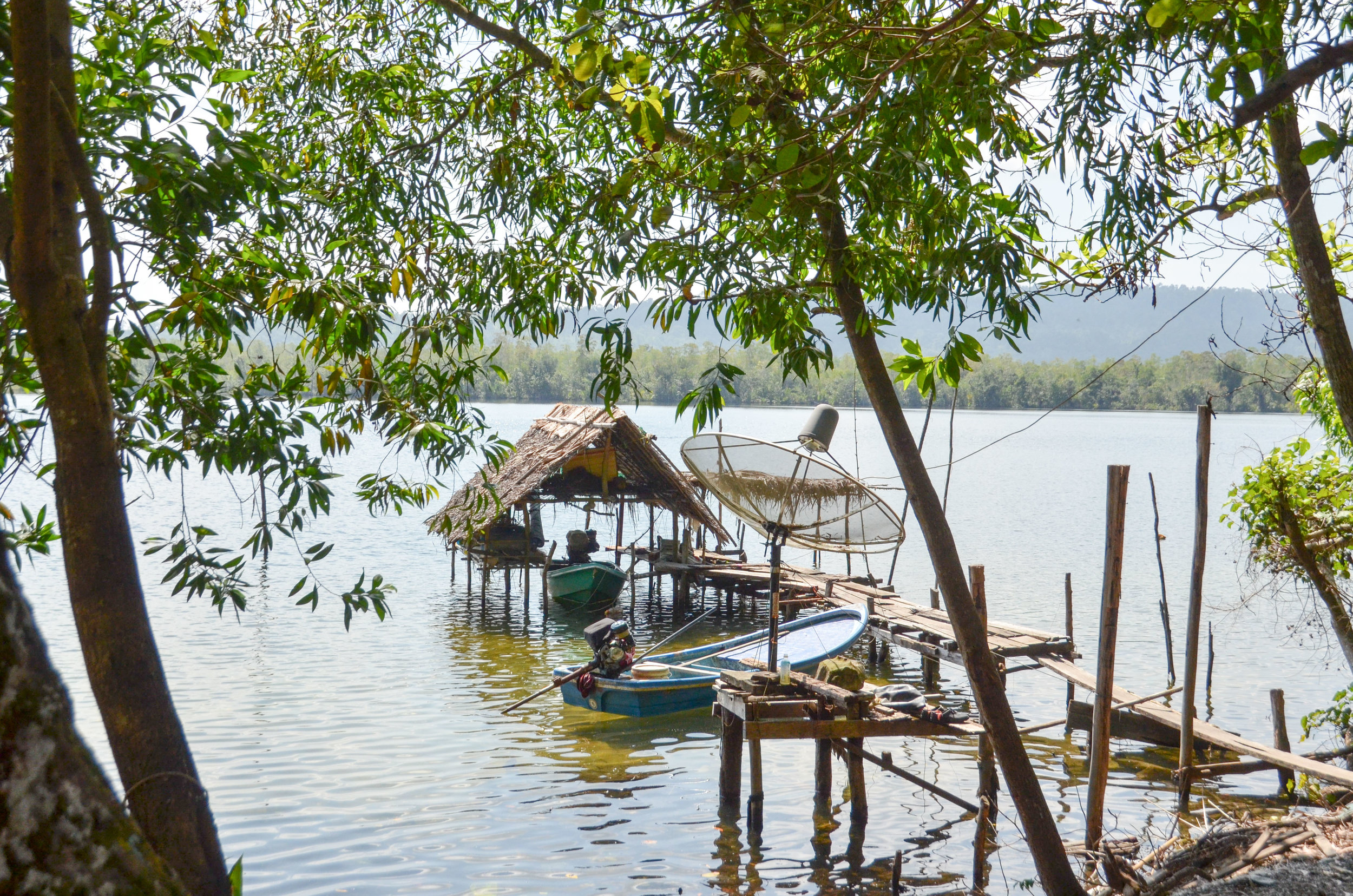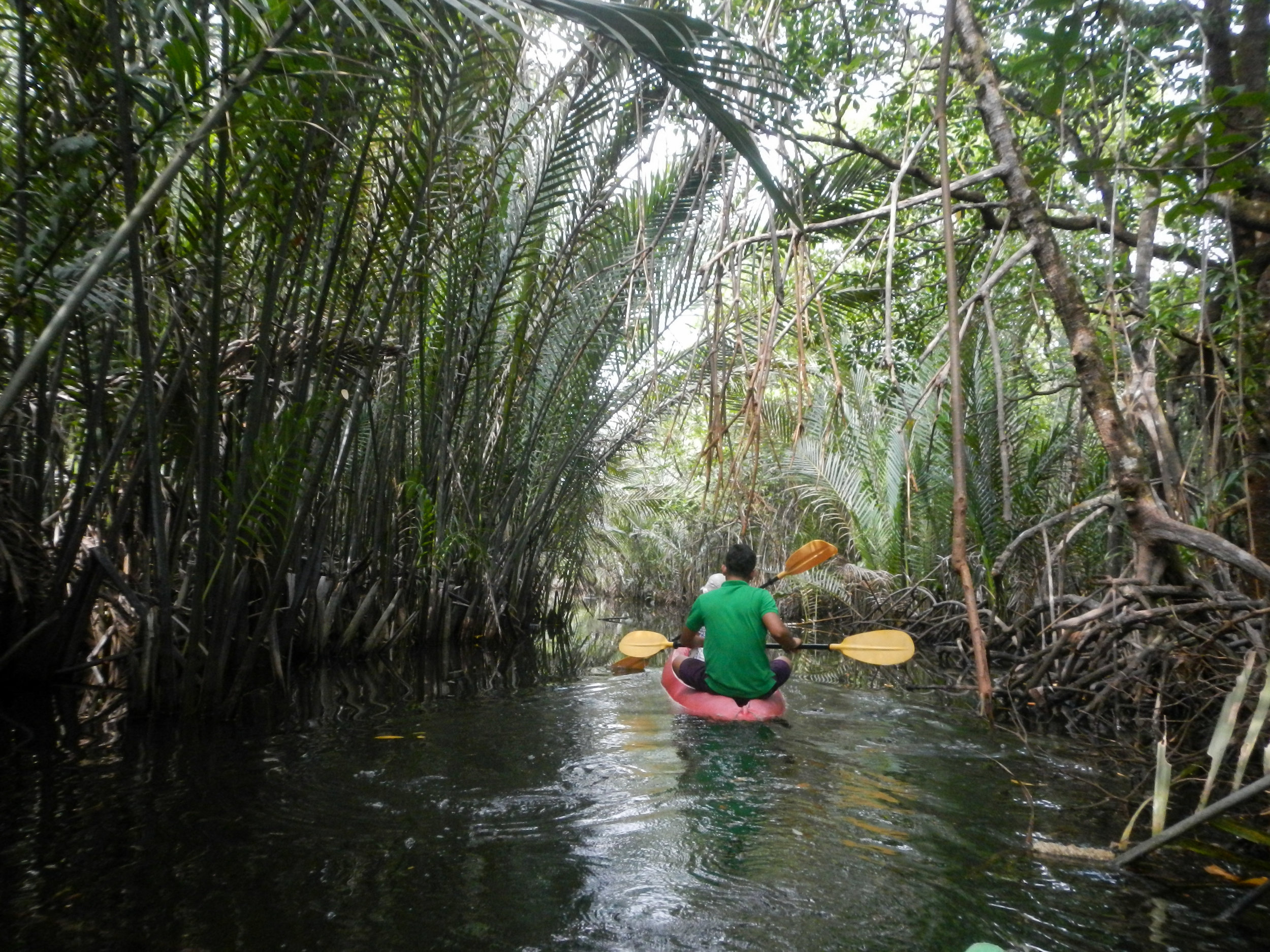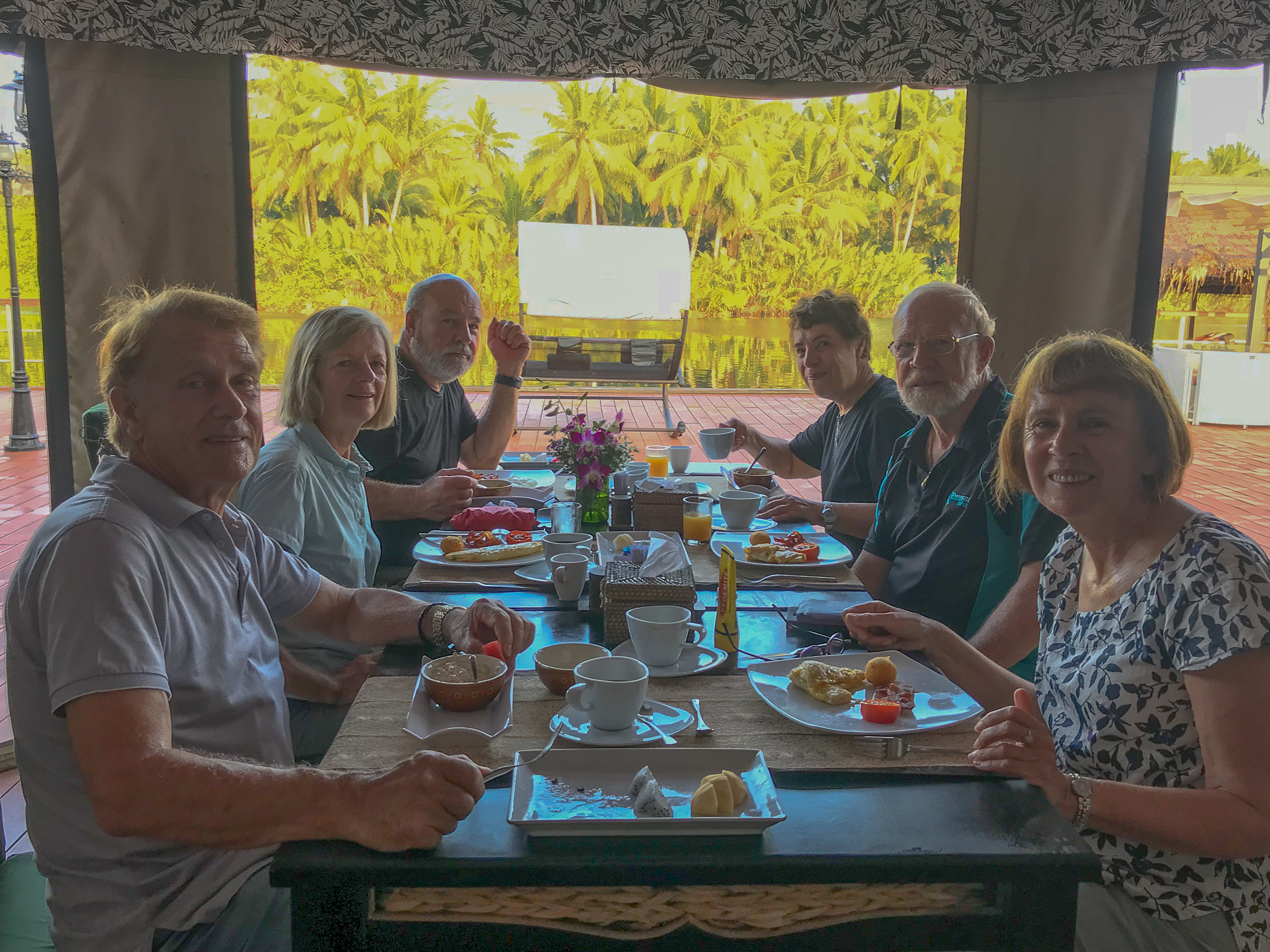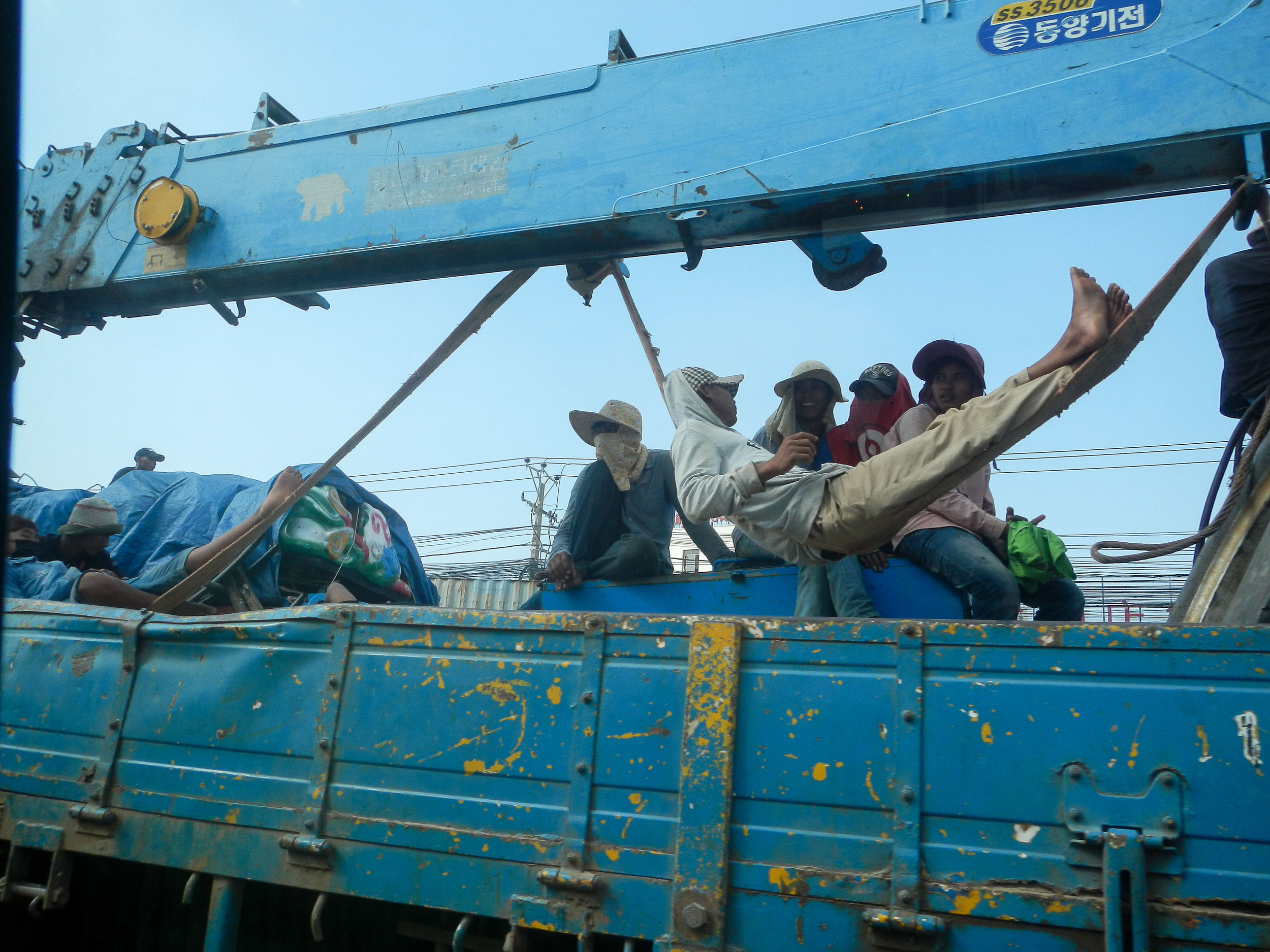Our day started quite early as we were to venture out onto the streets of Luang Prabang at dawn to see the procession of monks as they received alms from local residents and businesses along the roadside.
In semi darkness at 06:00 several hundred monks walked in file and as they passed, people would give them offerings of food such as boiled rice or sticky rice in bamboo. The monks also received sweets such as chocolate bars and these were accepted and then later put into separate baskets along the street for donations to the poor and orphanages.
When this spectacle ended we moved along to the local morning food market. The market occupied about 300 m of a narrow street leaving barely enough room to walk between the stalls. The wares on display were as diverse as any we’ve seen so far with every conceivable type of food for sale. The variety of fresh fruits and vegetables was impressive with their quality and freshness being first class. Several types of fungi were on sale too.
The many stalls selling fish made for an interesting sight. There was a wide range of fish types and apparently all are from the Mekong River. Some of the biggest perch would have been around 10 kg. The meat market was not for the faint hearted as the offerings apart from normal cuts of meat also included intestines and other unidentified offal.
Food such as sausages, fish and rice was being cooked on small wood stoves along the street to add to the olfactory delights of the market!
We then returned to our hotel for breakfast and did a final packing of bags prior to heading for the airport for our early afternoon flight to Siem Reap in Cambodia.
Our flight south was for approximately two hours and as we approached Siem Reap the landscape below changed dramatically from mountains with deep river valleys to a broad wet plane with rice paddies extending in all directions.
Just before landing we passed over a perfectly rectangular lake and could see the vast waters of the Lake Tonle Sap.
We met our new guide Thay at the airport and were transported in a minibus for thirty minutes to our hotel called The Aviary Hotel. Our accommodation is very modern and quite a contrast to our colonial hotel in Luang Prabang.
Siem Reap is the main town providing the infrastructure for the huge tourist industry that is based on Angkor Wat and its archaeological region.

